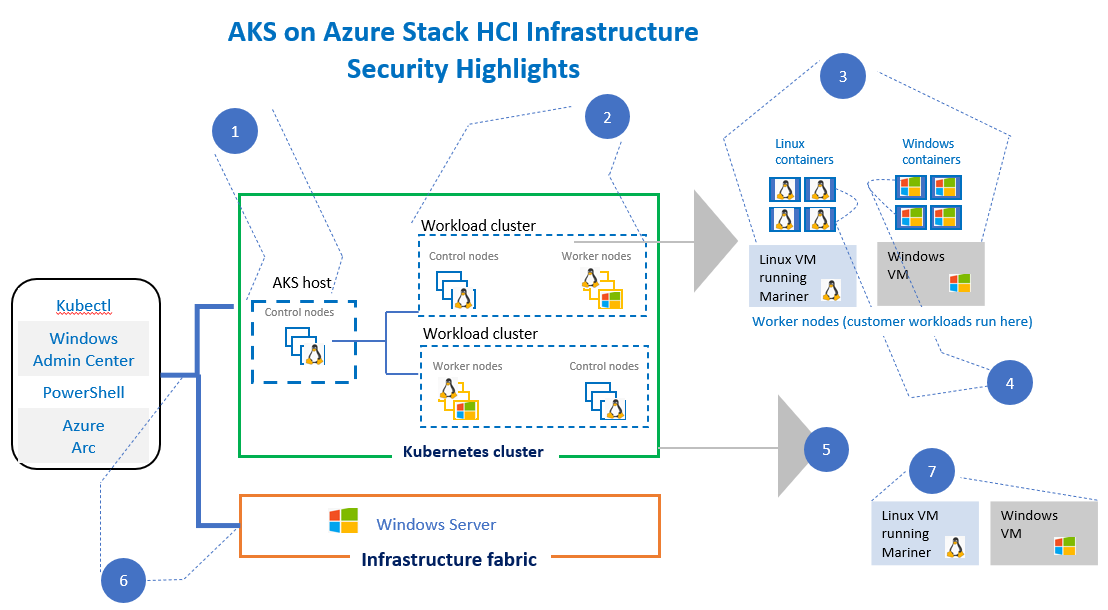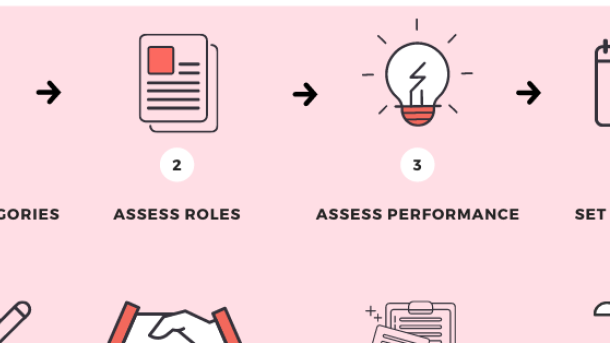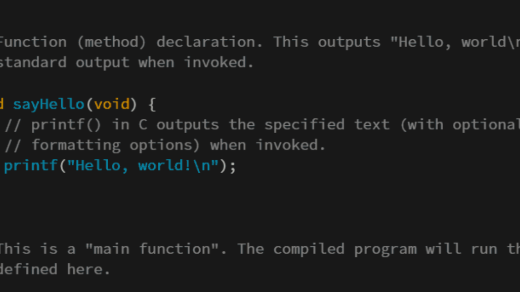Unlocking the Power of Efficiency: An Administration Guide
Introduction to Kubernetes

With Kubernetes, you can easily orchestrate and manage your applications, ensuring high availability and minimizing downtime. It provides a platform for containerization, which allows you to package your application and its dependencies into a portable unit called a container.
Kubernetes utilizes OS-level virtualization to create and manage these containers. It works with popular containerization software like Docker, which helps in building and running containers.
As an administrator, you will be responsible for the deployment and maintenance of Kubernetes clusters. This includes setting up the infrastructure, configuring networking, and managing resources.
Additionally, you will need to monitor the cluster’s performance, troubleshoot any issues, and perform debugging when necessary.
Kubernetes also provides various features for scaling applications, managing storage, and handling communication between services. It is designed to be highly scalable and can handle both small-scale deployments and large-scale production environments.
By learning Kubernetes administration, you will gain valuable skills in managing and scaling applications in a cloud computing environment. This knowledge can open up new career opportunities and enhance your overall understanding of containerization and orchestration technology.
Understanding Kubernetes Architecture
Kubernetes architecture is a crucial aspect of understanding how to effectively administer and manage a Kubernetes cluster. It is essential for Linux training as it forms the backbone of container orchestration and management.
At its core, Kubernetes is built on the concept of OS-level virtualization. It allows for the efficient utilization of hardware resources by running multiple application software instances on a single host. This is achieved through the use of containers, which provide a lightweight and isolated environment for running applications.
Communication between different components in a Kubernetes cluster is facilitated by a communication protocol called the Kubernetes API. This API enables seamless interaction between various software components, such as Docker, and allows administrators to easily manage and monitor the cluster.
Debugging is an important skill for Kubernetes administrators. With the distributed and complex nature of cloud computing, issues can arise that require troubleshooting and investigation. Understanding the underlying architecture of Kubernetes helps administrators identify and resolve these problems efficiently.
Kubernetes is an open-source software project originally developed by Google. Its architecture is designed to provide a scalable and reliable platform for running containerized applications. By mastering Kubernetes architecture and administration, individuals can gain valuable experience in managing modern infrastructure and minimizing downtime.
Deploying and Orchestrating Containers with Kubernetes
Kubernetes is an open-source container orchestration platform that simplifies the management of containerized applications. It provides a robust framework for automating the deployment, scaling, and management of containers, allowing you to focus on the application itself rather than the underlying infrastructure.
By leveraging Kubernetes, you can easily deploy containers across multiple hosts, ensuring high availability and fault tolerance. Its flexible architecture enables efficient resource utilization, allowing you to optimize your infrastructure and reduce costs.
With Kubernetes, you can also take advantage of advanced features such as automatic scaling, rolling updates, and service discovery, making it easier to maintain and update your applications. Its declarative approach to configuration ensures consistency and simplifies the deployment process.
To get started with Kubernetes, it is recommended to undergo Linux training that covers the fundamentals of containerization and Kubernetes administration. This training will equip you with the knowledge and skills needed to effectively deploy and orchestrate containers using Kubernetes.
By investing in Linux training and gaining hands-on experience with Kubernetes, you can position yourself for exciting career opportunities in the rapidly evolving technology industry. Don’t miss out on the chance to enhance your skills and stay ahead in the dynamic world of container orchestration.
Kubernetes Cluster Setup and Management
Kubernetes, an open-source container orchestration platform, offers powerful capabilities for managing and scaling containerized applications. In this guide, we will delve into the setup and management of Kubernetes clusters.
Setting up a Kubernetes cluster involves installing and configuring the necessary components such as the Kubernetes control plane and worker nodes. It is essential to have a solid understanding of Linux and containerization concepts, making Linux training a valuable resource.
Once the cluster is up and running, effective management becomes crucial. This involves tasks like deploying and scaling applications, monitoring cluster health, and managing resources. Kubernetes provides a range of tools and APIs to simplify these processes.
A key aspect of Kubernetes cluster management is ensuring high availability and fault tolerance. By using features like replication controllers and node auto-scaling, you can ensure that your applications are resilient and can handle increased traffic.
Furthermore, Kubernetes integrates with other technologies, such as Docker, to simplify application deployment and management. Docker allows you to package and distribute your applications as containers, making them portable and easy to manage across different environments.
Managing Resources and Productivity with Kubernetes
When it comes to managing resources and increasing productivity, Kubernetes is a powerful tool. With its ability to automate and orchestrate containerized applications, Kubernetes streamlines the deployment and management process.
To effectively manage resources, Kubernetes offers various features. One important feature is resource allocation, which allows you to allocate CPU and memory resources to containers based on their requirements. This ensures that each container has the necessary resources to run efficiently without impacting other containers on the same node.
Another key aspect of resource management in Kubernetes is scaling. Kubernetes provides horizontal pod autoscaling, which automatically adjusts the number of pods based on metrics such as CPU utilization or custom metrics. This ensures that your applications have the right amount of resources at all times, preventing overprovisioning or underutilization.
In addition to resource management, Kubernetes also enhances productivity. Its container orchestration capabilities simplify the process of deploying and managing applications, allowing developers to focus on writing code rather than worrying about infrastructure. Kubernetes also supports rolling updates and rollbacks, ensuring seamless updates without any downtime.
Moreover, Kubernetes integrates well with other tools and technologies in the ecosystem. For example, Docker is often used as the container runtime for Kubernetes, providing a standardized packaging and distribution format for applications. Kubernetes also supports various open-source software and web services, allowing you to leverage existing tools and technologies.
Backup, Restore, and Database Management in Kubernetes
In Kubernetes, ensuring the safety and availability of your data is crucial. That’s why backup, restore, and database management are essential components of Kubernetes administration.
Backup allows you to create copies of your data and applications, providing a safety net in case of accidental data loss or system failures. Kubernetes offers various backup solutions, including native tools and third-party plugins. These tools enable you to schedule regular backups, create snapshots of your data, and store them in a secure location.
Restore is the process of recovering your data from a backup. With Kubernetes, you can easily restore your applications and databases to a previous state, ensuring minimal downtime and data loss. Restoring from backups is a critical step in disaster recovery, allowing you to quickly recover from any unforeseen events.
Database management in Kubernetes involves managing the lifecycle of your databases and their associated resources. Kubernetes provides operators and controllers that automate the deployment, scaling, and monitoring of databases in a containerized environment. These tools simplify the management of databases, ensuring high availability and performance.
By effectively managing backups, restores, and databases in Kubernetes, you can ensure the reliability and availability of your applications and data. It’s essential to regularly test your backup and restore processes to verify their effectiveness and address any potential issues proactively.
As you dive into Kubernetes administration, make sure to explore the various backup and restore options available, such as Velero and Stash. Additionally, familiarize yourself with Kubernetes-native database management tools like Kubernetes Operators for popular databases like MySQL or PostgreSQL.
Monitoring and Logging in Kubernetes
To monitor your Kubernetes cluster, you can utilize various tools such as Prometheus and Grafana. These tools provide real-time monitoring, alerting, and visualization of the cluster’s metrics. By keeping a close eye on resource usage, application performance, and network traffic, you can ensure optimal operation of your cluster.
Logging in Kubernetes involves capturing and storing logs generated by the cluster’s components and applications. Tools like Elasticsearch, Fluentd, and Kibana (EFK stack) can be used to aggregate, index, and search these logs. This allows you to analyze logs and identify any errors or anomalies, enabling you to quickly respond and resolve any issues.
Proper monitoring and logging in Kubernetes not only helps in maintaining the health and performance of your applications but also aids in capacity planning and troubleshooting. By monitoring resource utilization and identifying bottlenecks, you can optimize the cluster’s performance and ensure efficient resource allocation.
Troubleshooting and Security in Kubernetes

When troubleshooting, it is important to understand the various components of Kubernetes and how they interact. Monitoring is essential to identify any potential problems or bottlenecks. Tools like Prometheus or Grafana can help in this process. Additionally, logging plays a vital role in troubleshooting, as it provides valuable insights into system behavior and can help pinpoint the root cause of issues.
Security is another critical area in Kubernetes administration. Access control mechanisms must be implemented to ensure only authorized users have access to the cluster. Role-Based Access Control (RBAC) can be used to define granular permissions for different users or groups. Regularly updating and patching Kubernetes and its components is also crucial to prevent potential vulnerabilities.
To enhance security, it is recommended to enforce network policies to restrict communication between different pods or namespaces. Additionally, secrets management should be handled carefully to protect sensitive information such as passwords or API keys.



